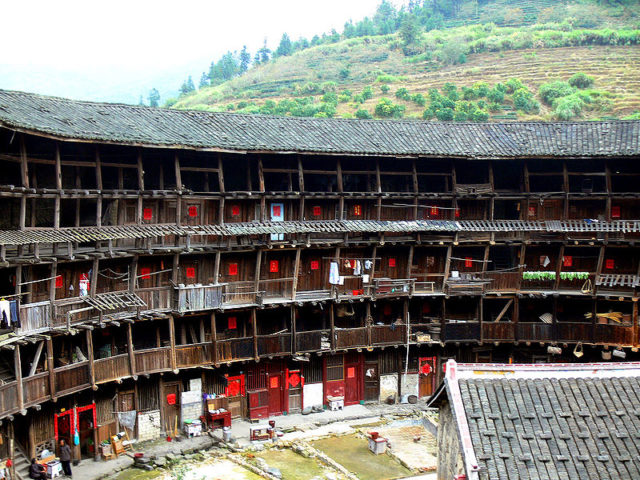The Fujian earthen buildings are of Chinese origin and are typical for the Hakka people that live high in the mountain areas of the Fujian.
They date from the 12th century but are continuously built up to the 20th century.
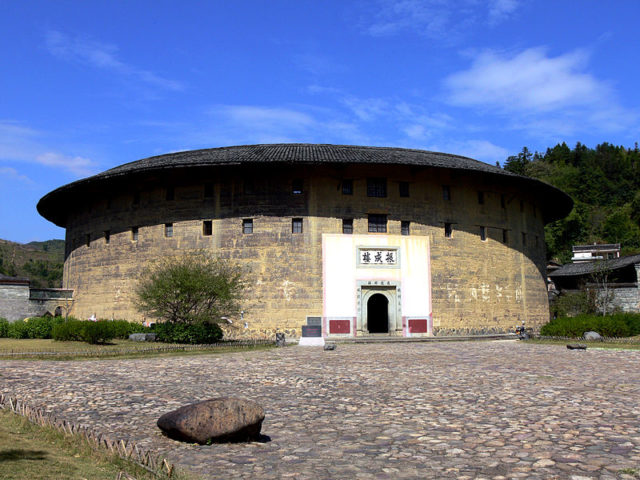
The shape that these buildings take is either circular or rectangular, with thick rammed walls made from earth, and can house up to 800 people.
In this earthen walls, smaller interior buildings are often enclosed which contain halls and storehouses, living areas and wells, thus the resemblance of a fortified city.
The walls are made from earth mixed with stone and bamboo and can be 1.8m thick. As additional reinforcement, branches, strips of wood and bamboo chips are often laid on the wall.These earthen buildings usually have only one main gate which are guarded by 4-5-inch-thick wooden doors and on the top of the tulous there are gun holes for defensive purposes.
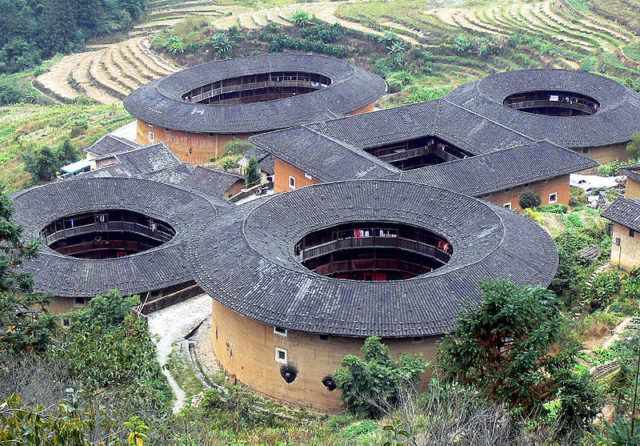
Most of the tulous can be find between the borders of Yongding and Nanjing counties in Fujian province.
In 2008 some 46 Fujian tulou sites were protected by UNESCO as World Heritage Site.
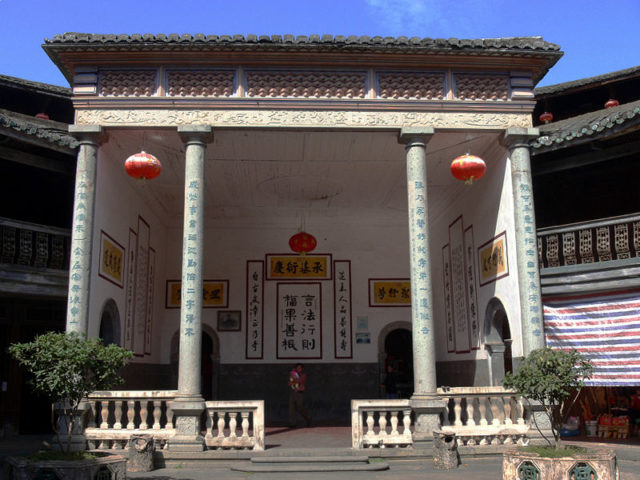
The layout of the tulous followed the Chinese dwelling tradition of “closed outside, open inside: concept.
At the center of the tulous there is a small building which served as an ancestral hall for ancestry festivals, meetings, weddings, worshipping, funerals and other ceremonial functions.
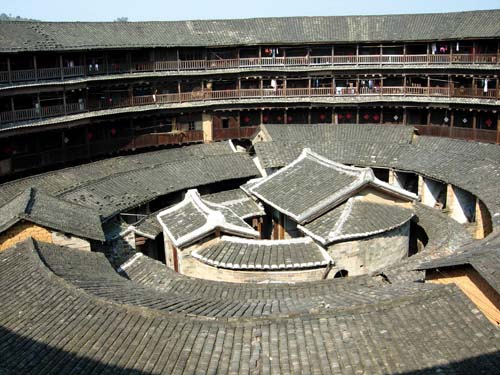
The largest Tulou is The Chengqi lou in Yongding county with a diameter of 62.5 meters.However, Huang Hanmig discovered that Shunyu lou located in Nanjing county is even larger with a diameter of 74.1.The smallest tulou is Cuili lou in Nan keng township of Nanjing county with a diameter of 14 meters.
The oldest tulou was built in 1371 in Shajian village of Hua An county, and its called ellpitic tulou Qiyun lou.
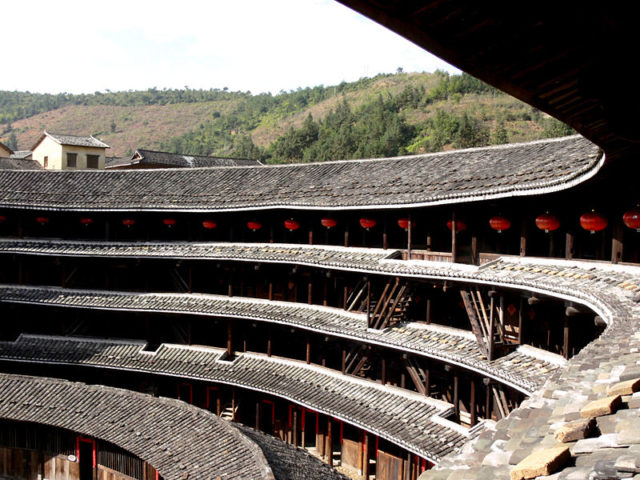
The rooms at the tulous are build the same size using the same materials, all of them have the same windows and exterior and there is no expensive and luxurious apartments for the so called “higher echelons”. The families that live at the tulous share almost everything.They share not just the building but also the bathrooms, the wash rooms, and the weapons, even the farmland, and food.
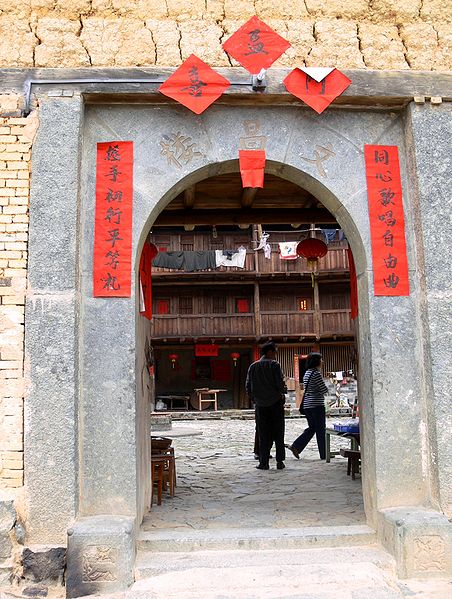
Many residents moved out or live in a larger town but they keep their ancestral tulou apartment under padlock.They return home for festivals during family reunions.
